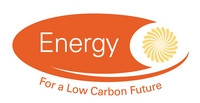Storage and Flexibility Modelling: D1.3 Approach for modelling long term role of energy storage
Abstract:
The primary objective of the Storage & Flexibility Modelling Project is to develop the capability toimprove understanding of the future role of energy storage and the provision of system flexibility within the context of the overall energy system. This aims to provide a techno-economic evaluation of energy storage across multiple energy vectors (electricity, heat, gas and hydrogen) accounting for the different services that could be provided (frequency response or avoiding wind curtailment) and at which points in energy system (transmission, distribution, building level) they are most appropriate.
Stage 1 of the project is comprised of 3 deliverables - of which this is the third :
- D1.1 Energy storage mapping report - a first principles framework for mapping ;the system technical services and benefits that storage (heat, hydrogen, gas and;electricity) and competing flexibility options could provide.
- D1.2 Assessment of the near term market potential for energy storage, over the next 5-10 years given the current market structures, with a particular focus on electricity
- D1.3 Approach for modelling long term role of energy storage (this report) - which defines the modelling approach to analysing the longer term role for storage and other relevant flexibility options in GB from a system operator perspective.
- Design Requirements
- Review of Literature
- Overview of Modelling Framework
- Modules
- Data Requirements
- Scenario Framework
- Techinical and Data Architecture
- Private Investment Perspective
Publication Year:
2017
Publisher:
ETI
Author(s):
Humphry, L, and Greenleaf, J.
Energy Categories
Class Name:
Subclass Name:
Category Name:
Language:
English
File Type:
application/pdf
File Size:
1908879 B
Rights:
Energy Technologies Institute Open Licence for Materials
Rights Overview:
The Energy Technologies Institute is making this document available to use under the Energy Technologies Institute Open Licence for Materials. Please refer to the Energy Technologies Institute website for the terms and conditions of this licence. The Information is licensed "as is" and the Energy Technologies Institute excludes all representations, warranties, obligations and liabilities in relation to the Information to the maximum extent permitted by law. The Energy Technologies Institute is not liable for any errors or omissions in the Information and shall not be liable for any loss, injury or damage of any kind caused by its use. This exclusion of liability includes, but is not limited to, any direct, indirect, special, incidental, consequential, punitive, or exemplary damages in each case such as loss of revenue, data, anticipated profits, and lost business. The Energy Technologies Institute does not guarantee the continued supply of the Information. Notwithstanding any statement to the contrary contained on the face of this document, the Energy Technologies Institute confirms that it has the right to publish this document.
Further information:
N/A
Region:
United Kingdom
Publication Type:
Subject:
Theme(s):
Energy Storage and Distribution
Related Dataset(s):
No related datasets
Related Project(s):
Related Publications(s):
Balancing supply and demand in the energy system - Presentation
Energy Storage and Distribution Brochure
Infographic - 10 Years of Innovation - Energy Storage and Distribution
Modelling Storage and Flexibility within the Whole Energy System - Presentation
Network Transition Challenges Presentation
Storage and Flexibility Modelling: Balancing Supply and Demand in the Energy System
Storage and Flexibility Modelling: D1.1 Energy Storage Mapping Report
Storage and Flexibility Modelling: D2.4 Final Report
Storage and Flexibility Modelling: Near Term Opportunities for energy storage
Storage and Flexibility Modelling: Storage Modelling Framework
Transitioning to a low carbon energy system: network transition challenges - Presentation



